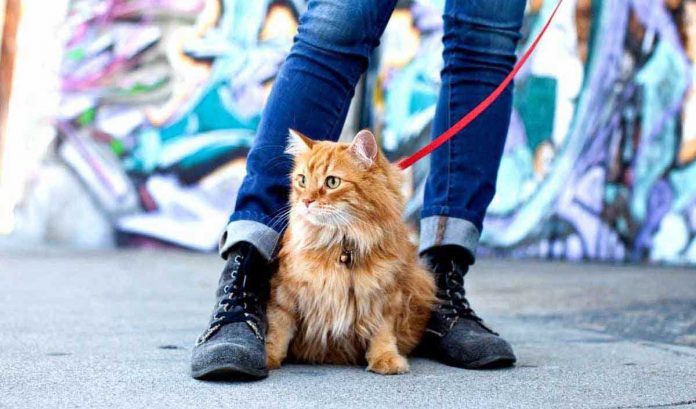Veterinarians still cannot agree on whether indoor cats need outdoor walks. Some argue that pets can do without them, others, on the contrary, believe that animals need new experiences. How to walk a cat and should you do it at all?
Why is walking useful for cats?
Walking a cat certainly has certain benefits. First of all, walks in the fresh air have a beneficial effect on the health of pets: they rarely suffer from obesity and are in excellent shape – they are more hardy and physically strong animals. In addition, an appropriate lifestyle helps to preserve the pet’s natural instincts.
What kind of walks are there?
Walking cats is of two types: free and accompanied by the owner.
- Free walking is called an independent walk of the pet. For example, a cat goes out in the morning and returns home in the evening. Usually, this is how the life of animals in a village or in a summer cottage is arranged;
- Walking on a leash, accompanied by the owner. This is a safer type of walking, because the cat is always under supervision. However, a leash can add additional stress to your pet. The fact is that cats, unlike dogs, perceive him as a restraint of freedom. At the moment of danger, a frightened animal does not have the opportunity to run away and hide, which makes him nervous.
Dangers on a walk
When deciding whether to walk the cat or not, it is worth considering the dangers that the pet may face.
- Other animals
Not only aggressive stray dogs fall into this category, but other cats as well. They can be carriers of genital infections. Neutering your pet will help avoid unwanted contacts.
- Cars
Unfortunately, a free-walking cat can easily fall under the wheels of a car, even in the yard of the house. Therefore, special attention should be paid to the choice of a place for walking the pet.
- Diseases
The greatest risk of walking for cats is various kinds of illness: from viruses and ectoparasites to poisoning with household chemicals and poisons. In part, walking can be made safer if timely vaccinations are carried out and the pet is carefully treated against ticks and fleas. However, it will not be possible to completely protect a free-walking cat, for example, from poisoning with rat poison.
- People
Strangers are also a danger to pets. If the cat is purebred or has a unique color, it can be stolen.
The rules for walking cats will help make the walk safer and more enjoyable for both the owner and the pet. If you follow them, you can avoid many problems:
- Install the chip – a pet with a chip is much more likely to return home if it gets lost;
- Collar tag. An alternative version of the chip can be an address tag with the pet’s nickname and your phone number;
- Choose a harness – If you plan to walk your cat on a leash, carefully consider choosing the right model. A simple collar will not work because, unlike dogs, cats have weak neck muscles;
- Explore the grounds – the urban environment is certainly not the best place for a cat to walk freely. Together with your pet, you can go to the park or nature. The main thing is that there are no other animals nearby, such as dogs, and cars that could scare him. The ideal area for free walking is the fenced yard of a private house in the countryside. The cat will not feel discomfort, but it will always be safe.
- Observe the quarantine. Weakened or recovering animals, as well as kittens and pregnant cats, must not be allowed out into the street. If the pet is not sterilized, experts do not recommend walking during estrus.
- Get used to the outdoors gradually. The first walk should not be long, and it is advisable to spend it in a quiet secluded place. It is important to keep the cat in your arms. Over and over again, the walking time is increased. When the pet feels more confident, it can be lowered to the ground.
Is it possible to walk in winter?
Some owners are interested in the question of whether it is possible to walk the cat in winter. Members of the family that have a long coat and a thick undercoat (for example, Siberian Longhaired, Maine Coon, or Norwegian Forest) can explore the snowy yard without any problems. They feel great at temperatures down to –10 ° С. But it is still better not to let out short-haired pets in frosty weather.
Banned walks
There are a number of breeds for which walks are not only unnecessary, but even contraindicated. These are the majority of decorative cats: for example, sphinxes, bambino or munchkin. They are too gentle for the harsh environmental conditions.


